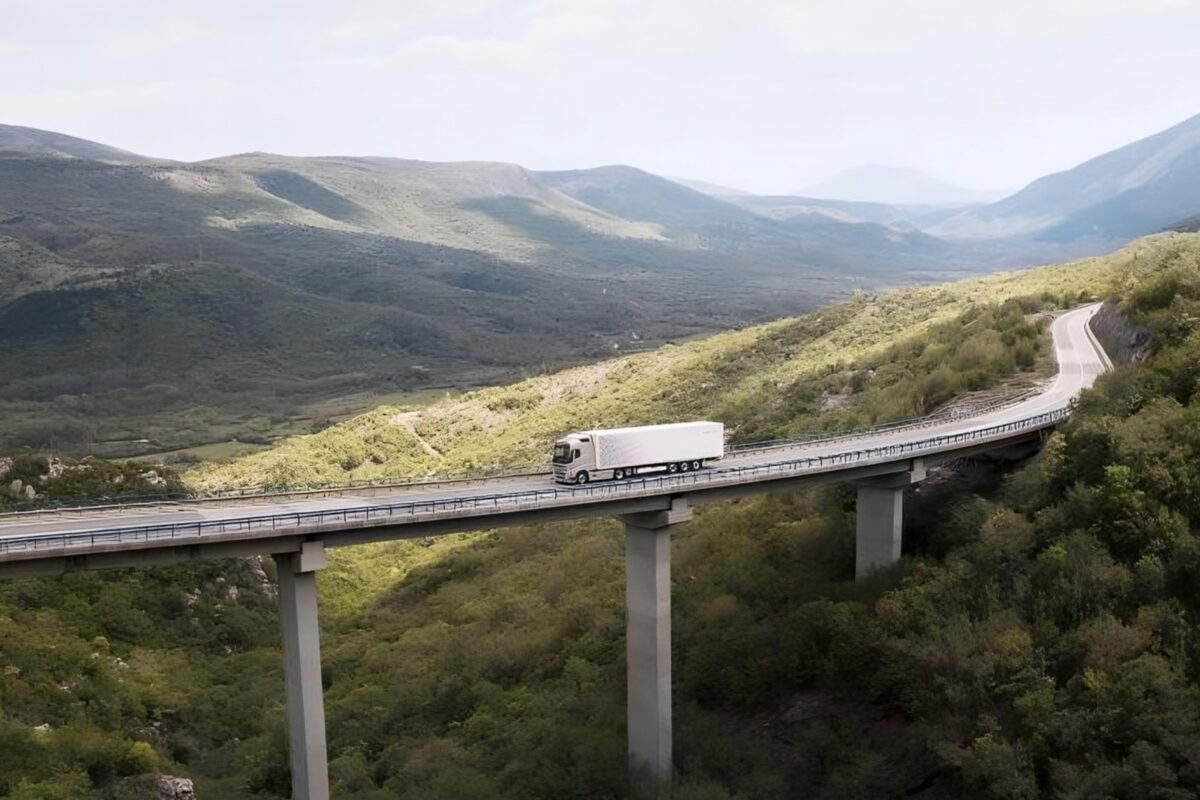Heavy truck operators make their vehicle purchasing decisions in a far more hard-headed way than private or even fleet passenger car buyers. Elegant cab styling cuts little ice with the transport manager looking, first and foremost, to contain operating costs, with fuel economy now the key priority. The eye-catching Volvo FH and Mercedes-Benz Actros cabs unveiled as all-new designs in recent months understandably drew the crowds at this year’s IAA Commercial Vehicles show in Hanover. But serious potential buyers would have also looked closely at the Scania, Iveco, MAN and DAF competition, where ‘refreshing’ facelifts were the 2012 order of the day.
Volvo would argue that its outgoing FH cab was 19 years old and had fallen behind, especially in terms of interior space. Its successor, having a more upright windscreen – but with aerodynamic compensations – is likely to score more heavily with drivers, particularly those who frequently spend the night on board. The new Actros cab, replacing a 17-year old design, is likewise aimed at boosting driver appeal.
[quote align=”center” color=”#999999″]Heavy truck operators make their vehicle purchasing decisions in a far more hard-headed way than private or even fleet passenger car buyers
But what of their rivals? Perhaps most remarkable is DAF’s tall XF cab, the basic steel shell of which first saw the light of day 25 years ago, in 1987. It made its debut on the Dutch company’s 95-series chassis and was developed in a joint venture with the Spanish ENASA group, builder in those days of Pegaso trucks. The same cab, with front panel and trim variations, appeared on Pegaso’s Troner heavy range, though in 1990 Fiat-Iveco acquired Pegaso and the joint-venture cab was dropped in favour of that from Iveco’s Eurostar.
DAF’s engineering has always been conservative, both before and after its acquisition by Paccar of the US in 1996. Indeed the origins of its diesel engine designs can be traced back five decades to Leyland power units of the late 1950s. And DAF was one of the last truck engine manufacturers to adopt electronic fuel controls.
The lack-lustre but practical 95-series cab took on a new and distinctive character in 1997, when it acquired what was at first a visually controversial lower front grille. The ‘double deck’ grille was necessitated through the cab being raised, partly in order to reduce engine ‘hump’ intrusion into the crewspace. It made what was by then dubbed the XF105 cab perceptibly more roomy which, enhanced by the optional high roof, has proved a vital attraction for DAF’s flagship models.
[quote align=”center” color=”#999999″]Elegant cab styling cuts little ice with the transport manager looking, first and foremost, to contain operating costs, with fuel economy now the key priority
A quarter century on, through successive face-lifting iterations, the latest breaking cover at this year’s IAA show, the same basic cab has succeeded in retaining its sales appeal, as evidenced by DAF’s continually growing penetration of the heavy-duty market segment. In 2011, it was European market leader in articulated tractors and is now the leading imported marque in Germany, having overtaken its two Swedish rivals.
Though DAF remains Europe’s smallest truck manufacturer in overall volume terms, a reputation for no-frills reliability and a proven breakdown and after-sales record, have shown convincingly that retention of ‘that same old cab’ is little hindrance to sales performance.
The opinions expressed here are those of the author and do not necessarily reflect the positions of Automotive World Ltd.
Alan Bunting has a background in engineering, and has been writing on commercial vehicle and powertrain related topics since the 1960s. He has been an Automotive World contributor since 1996.
The AutomotiveWorld.com Expert Opinion column is open to automotive industry decision makers and influencers. If you would like to contribute an Expert Opinion piece, please contact editorial@automotiveworld.com



